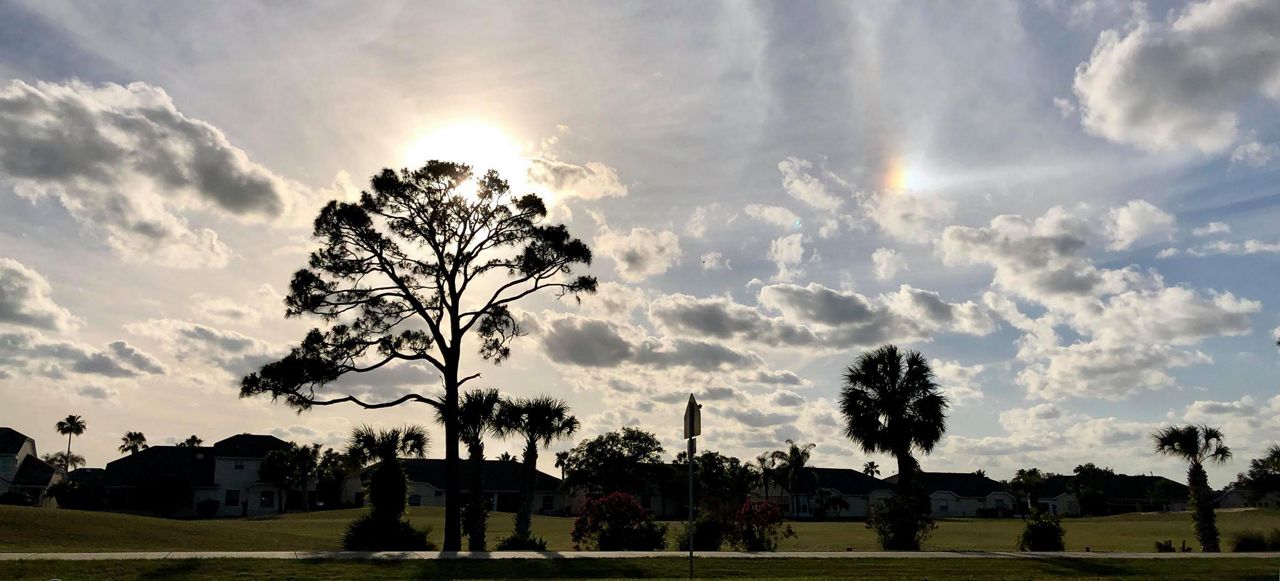Aside from producing the weather that we experience every day, the atmosphere is also capable of creating some very colorful optical effects. Most of us have seen a rainbow after a heavy rain or a halo around the sun or moon, but there are many more lesser-known optical phenomena, like the "sun dog."
What exactly is a sun dog? Well, in short, sun dogs are colored spots of light located to the left, right, or both sides of the sun.
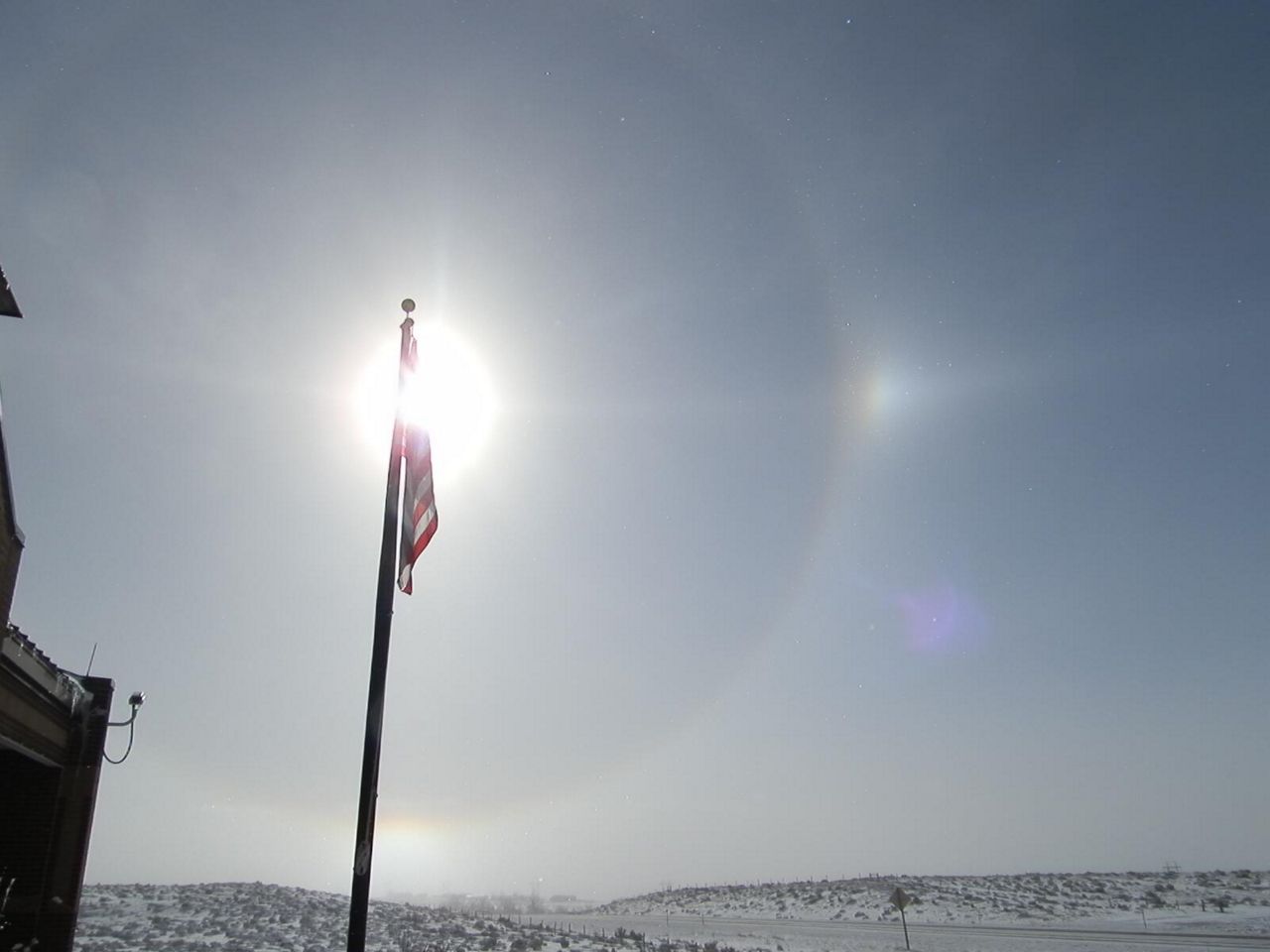
The colors typically go from red nearest to the sun, to blue farther away from the sun. Their colors are more muted than those of a rainbow and sometimes even appear to look like miniature suns.
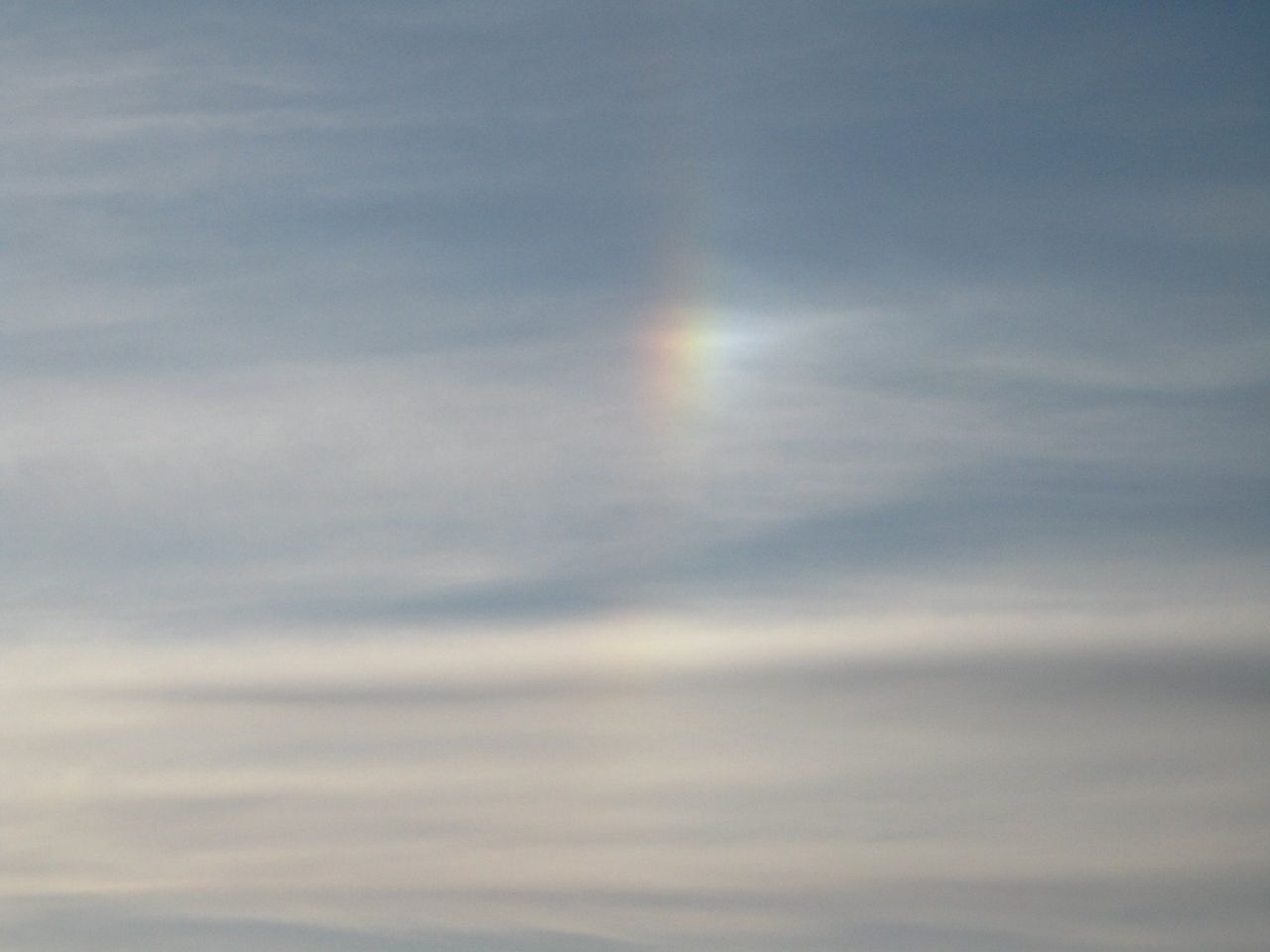
Clouds in the atmosphere are composed of water droplets and/or ice crystals. Under certain atmospheric conditions, the water droplets and ice crystals can act as a prism, separating visible light into the colors contained within it.
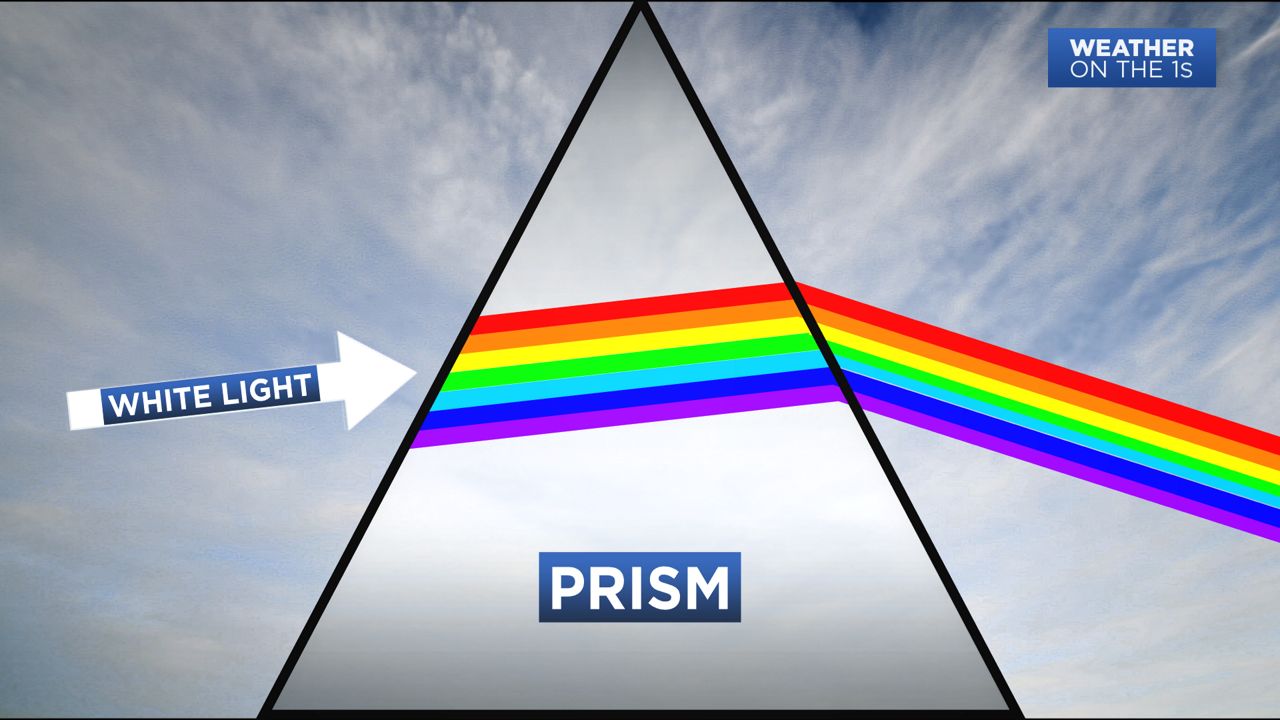
Sunlight is refracted by hexagonally-shaped ice crystals inside of a cloud and bent, or refracted. As the ice crystals within the cloud move downward, their large hexagonal face becomes almost horizontal, causing light to pass through and bend at about a 22 degree angle. This creates a rainbow effect on each side of the sun.
Sun dogs are seen most frequently when the sun is low on the horizon, such as around sunrise and sunset. Since clouds at high levels of the atmosphere are composed of ice crystals, a day when high, wispy cirrus clouds are present may produce optimal conditions for sun dogs to form!
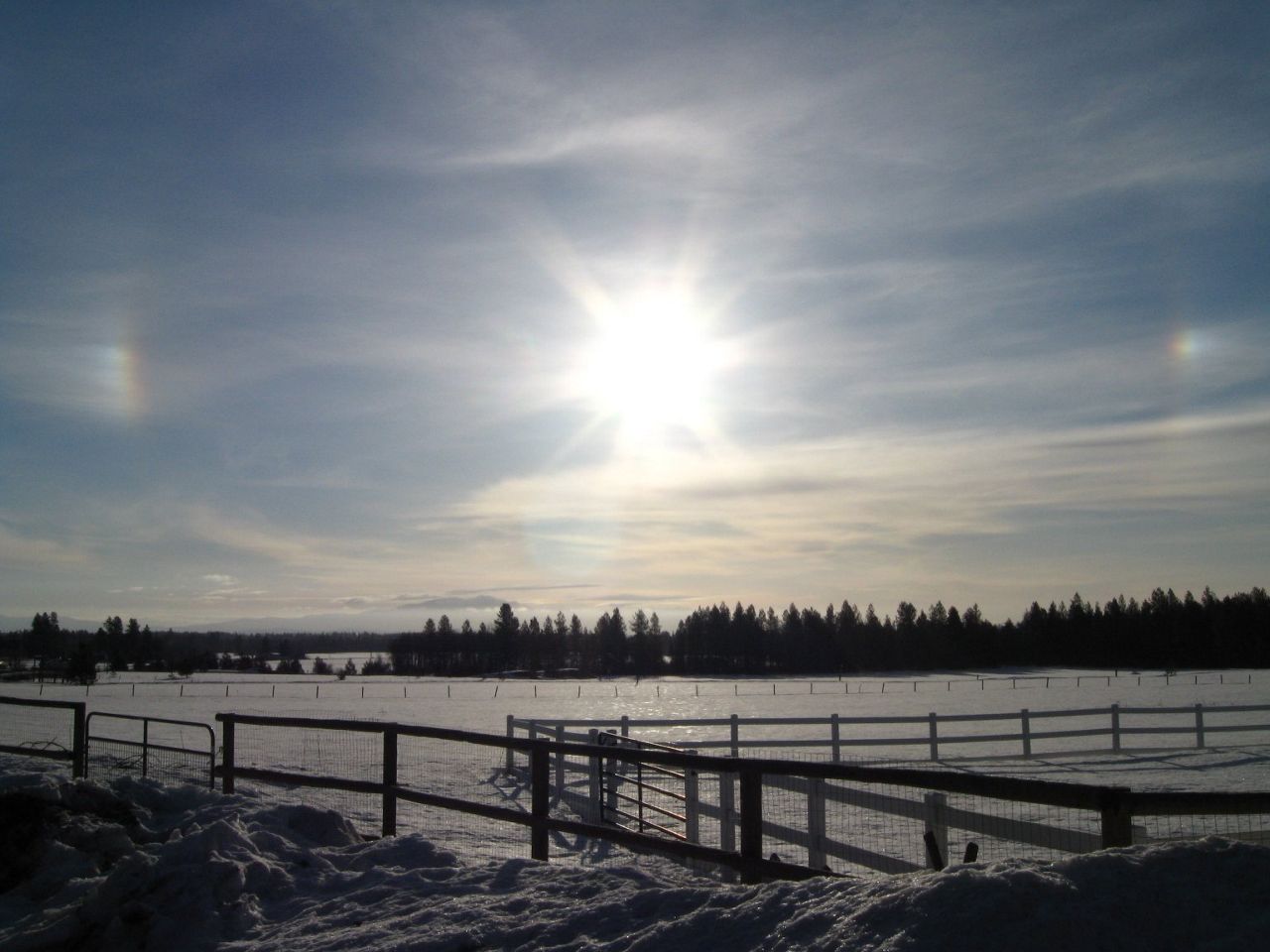
Although sun dogs can form at any time of the year, they are most commonly visible during cold weather months when ice crystals in clouds, or just floating in the air, are more abundant.



